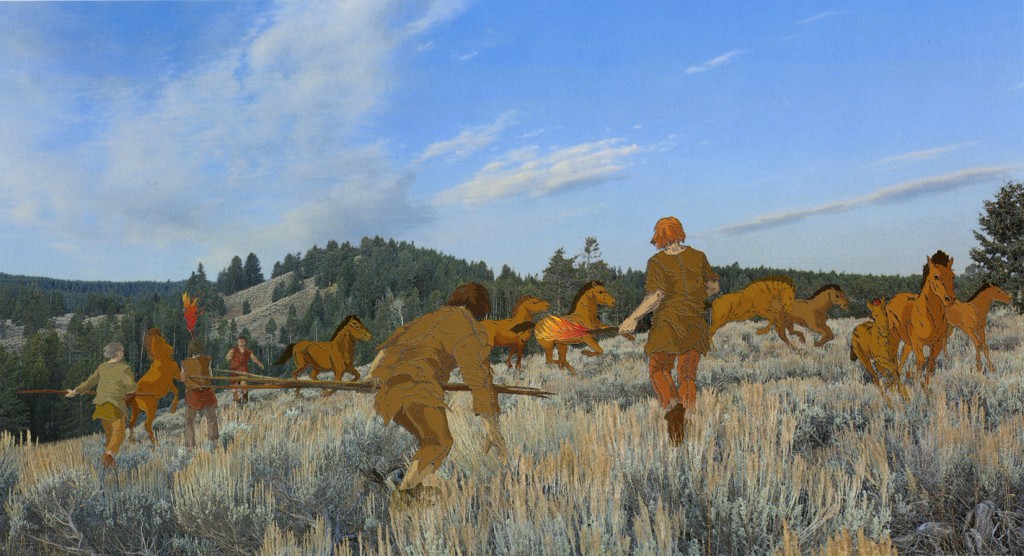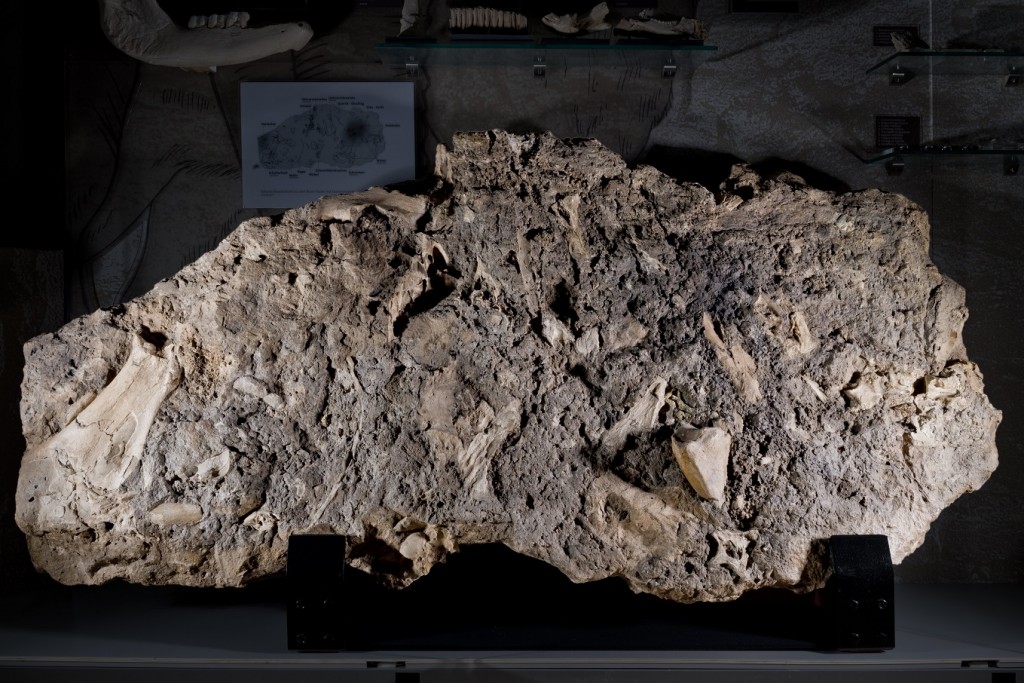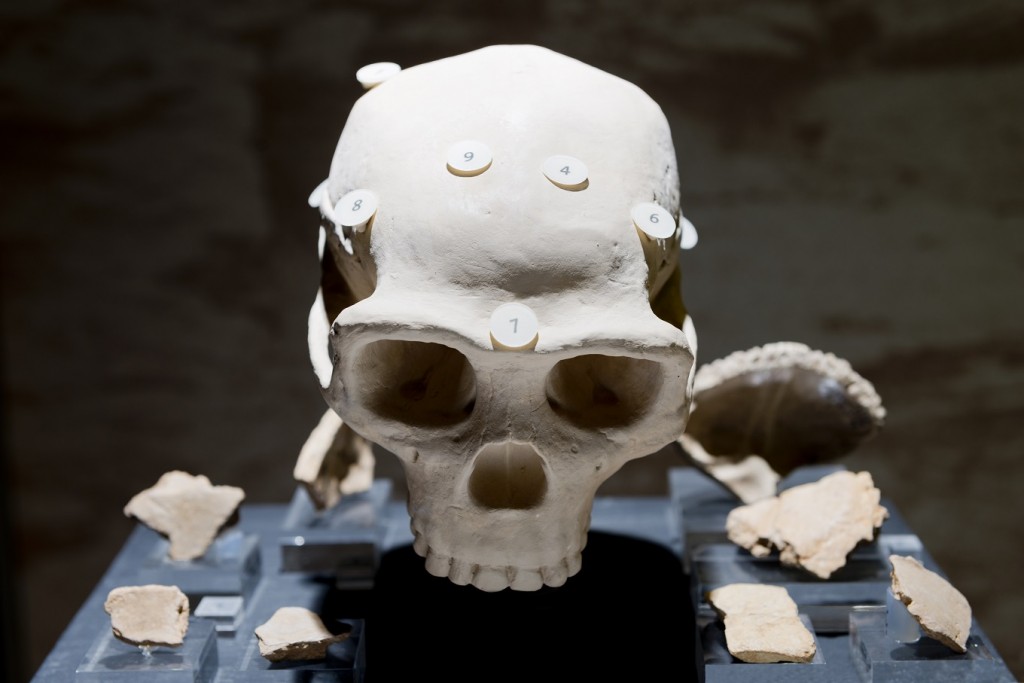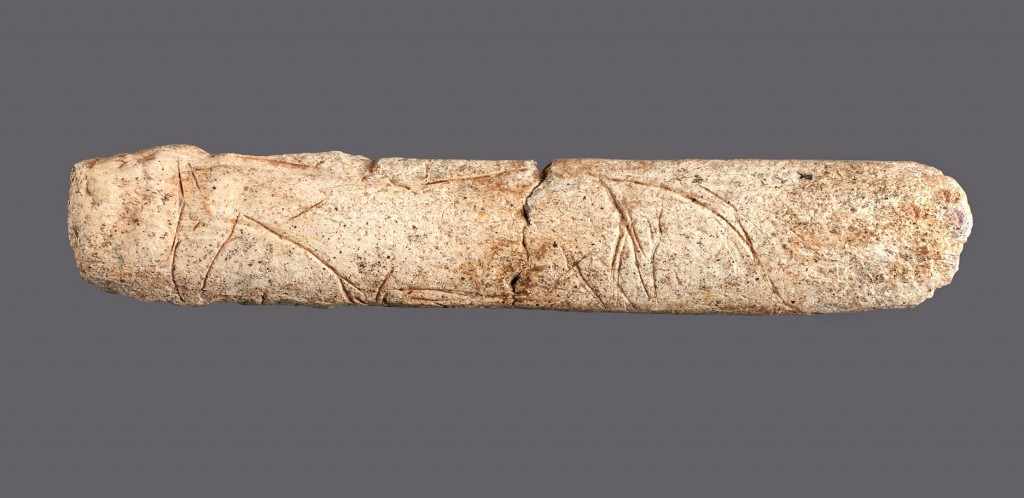The Palaeolithic: 400,000 – ca. 8,000 years BC

How It All Began – Hunters and Gatherers in the Ice Ages
Did you know that history of humankind, which began around 2.5 million years ago in Africa, can be traced back approximately 400,000 years in Thuringia? The presence of people coincides with the glacial epoch. Traces of prehistoric people belonging to the species Homo erectus have been found at the 340,000 year old site of Bilzingsleben (Municipality of Soemmerda). In the ALT you can see a model Homo erectus based on the fossils found there, along with numerous original artefacts and fossils, including skull pieces and flint tools, that typify a camping site of a group of prehistoric people. They could use fire, make tools of antler, stone or bone, and lived a nomadic hunter-gatherer lifestyle, specialising in large animal prey. On their menu, for example, were straight-tusked elephant and rhinoceros.
These were favoured large game that were also hunted by proto-Neanderthals living in the area characterised by travertine limestone around Weimar-Ehringsdorf more than 200,000 years ago. Hearths, human relics, animal bones, and plant remains were preserved so well in the travertine limestone that in the ALT we can present fascinating information about the prevailing climatic conditions and flora of the period, as well as about the everyday life of the Neanderthals.
Evidence of fully modern humans dating back to ca. 40,000 BC has been found in caves near Doebritz, in the Municipality of Saale-Orla, and in the Saale Valley near Oelknitz. This evidence includes small depictions of humans and animals, which played a role in hunting and fertility magic. Step back into the Stone Age in a life-size reconstruction of a cave, or study the carved pictures and stylised figures of the Thuringian Ice Age artists!




